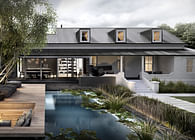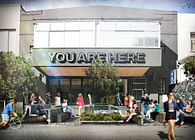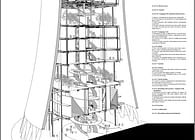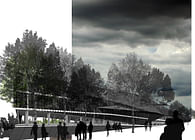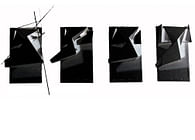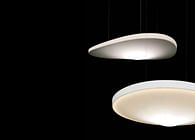
Celebrational Promenade: The Void as generator in Architecture, Bloemfontein, South Africa
The void as generator of architecture
The City of Bloemfontein- like many other cities in South- Africa, has suf- fered from a transition to- and from fatigue and renewal; xenophobia and global identity. With the Soccer World Cup approaching, a renewed emphasis falls upon the urban wastelands, post-spaces or voids left over, after events of this magnitude. While addressing the voids that will be left in the future city fabric, the consideration of existing voids, which have over long periods of time become “scars” in our city, becomes inevitable.
With regards to the voids or “scars” – which in most cases have had negative physical and mental influences on the urban fabric, as well as the society faced with them- it becomes essential to remedy the wounds that they have created. Through this design exercise, we have made an attempt to fill these voids by restoring the third landscape to its former glory by stitching up the wounds left by its removal. The “solid” new landscape can now become a space for watching, socializing and interacting- a space healed. A space brought to life. A space that will live on.
An urban design process was used in the construction of a laceration, in the form of a bridge over Bloemspruit- which at present acts as an open wound-together with an organic life- giving promenade, running along it. This gives physical design direction to urban growth, conservation and trans- formation in the Bloemfontein city centre. Through the careful consideration of transitional spaces and the effects of solids and voids, on a mental and physical level, the design approach reflects the interface between architecture, landscape and town planning, but also the complex relationship between all the elements of built and unbuilt space.
An opportunity is given for the creation of a meaningful place. Place being a space long taken over by human beings and where something is said about the relationships which human beings have with their own history, their nat- ural environment and with one- another. The idea of non-place, which is built on the concept of unrootedness, is demolished.
”The design space anticipates new ways of how people live. It reflects rural habits within an urban setting- a culture going through a transition.”
- Mpheti Morojele
Transitional space
Transition and change are some of the most important qualities that can be expressed through architecture. These qualities and spaces that express trans- formation play a fundamental role in our existence. They are experienced across many lands and cultures and within many beliefs and practises.
We felt strongly about the fact that he powerful experiences concerned with the process of transformation should not be limited to merely members of a particular group, but should extend beyond limitations and embrace multi- tudes of people, beliefs, uses and qualities.
This project explores the idea of celebrated spaces and what it means in an urban context. It also questions the creation of physical space that can act as a gateway or transition to celebration which can provide an escape or retreat from the ordinary.
Urban planning- a transition from apartheid
The early government reforms did little to ameliorate the situation created by empty spaces after Apartheid, so conditions deteriorated through accelerated urbanisation, economic stagnation and rising political unrests. The transition period is fraught with difficulties and so warrants detailed consideration. While architecture in South-African cities is a mix of European styles- Cape Dutch, Victorian, Edwardian, Art Deco and more recently, Tuscan. We were interested in exploring whether the new democratic order is being reflected in new buildings going up specifically with regards to the transitional spaces created by structures. Ideally these spaces would also give way to a new state of mind in the people who used them.
Apartheid has had a profound effect on the country’s architecture- something that is still very evident. In no other country does architecture and urban planning bear such vivid witness to history, to politics and to social division. And these deeply embedded traces of Apartheid remains visible in South Af- rica to this day. “Apartheid didn’t produce public spaces of note. The new style is trying to re-invent those spaces.”-Peter Rich
Transition to the restoration of the third landscape
The third landscape refers to left over space. A void. It refers to the space not used as a result of growth and expansion in cities, like Bloemfontein. It can be seen as the natural element in every dynamically evolving city. The third landscape accumulated in the wake of the socio- and spacio- economic pro- cesses of deindustrialization, and technological innovation. These spaces are the abandoned or transitional.
Through the design process that we followed, one of the main objectives became the restoral of the third landscape. It became the medium through which the existing- man made- wound in the urban fabric could be lacerated in an organic way.
© Jaun van Wyk
Status: Competition Entry
Location: Bloemfontein, ZA
My Role: Architect
